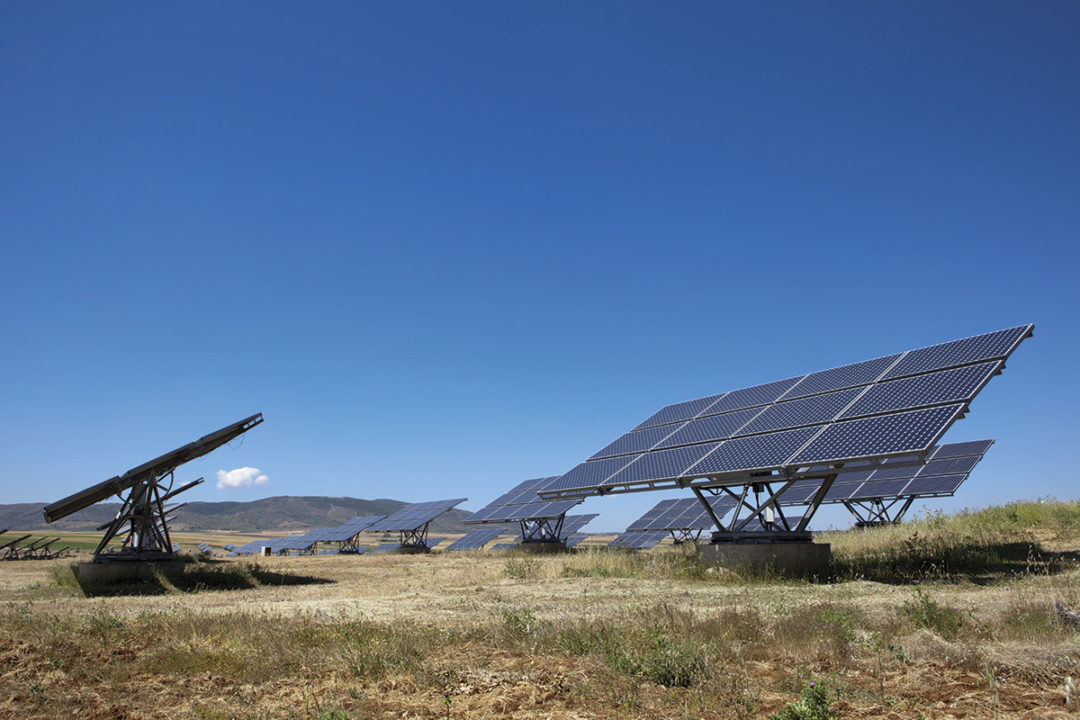As a result of various “green” initiatives, at both state and federal levels, the demand for renewable energy is on the rise. Many farmers and ranchers in the Western and Midwestern states have witnessed the growth of wind farms over the past 20 years and have financially benefited from their introduction. However, in more recent years, the renewable energy industry has seen a spike in the number of solar farms popping up across the country. As a result, solar farm developers continue to approach farmers and ranchers, seeking to utilize their land for solar farm developments. Because solar leases are long-term commitments – and dictate the property's future use – landowners should carefully consider a variety of factors when deciding whether a solar lease is right for them, their family and their land.
Like landowners, solar developers consider many factors when siting the location of a new solar farm, such as the land’s topography, proximity to the demand for electricity and proximity to transmission infrastructure, such as substations and transmission lines. Once a developer has identified the general area it plans to construct a solar farm, it sends out its representatives or “landmen” to meet with landowners and negotiate terms on its behalf. Landmen will then present landowners with a written lease prepared by the developer. While most solar leases contain similar terms, each one must be carefully analyzed.
When approached by a landman about a solar energy lease, the landowner must first determine whether the impact and intrusion of a solar farm operation outweighs the current and future use of the land. The answer is not always yes. While solar energy leases provide a new source of non-farming or ranching income from the land, with financial terms that can be fairly lucrative, there are many factors to consider before agreeing to potentially tie up land for the next 30 to 60 years. The financial benefits should not be the only consideration.
Solar leases grant energy companies the exclusive right to capture and convert the unobstructed flow of sunlight across the land. As a result, construction on the leased land that may cast a shadow onto the solar panels – such as barns, grain bins, windmills or windbreaks – is generally prohibited. While the landowner may be able to continue farming or ranching the land during the first few years of the lease, many leases require the landowner to stop all activity on the leased land once solar project construction starts. After construction, the lease may allow the landowner to return the non-developed land to agricultural use. Land encumbered by a solar lease may also limit any future exploration by the landowner for oil, gas and other minerals.
Once the issue of whether the land is right for solar development is determined, there are a multitude of other details to analyze closely. These include:
-
Length of the lease: Leases generally include three broad periods: an option/development term (approximately two to five years) that allows the solar developer to survey, inspect and test whether the land is suitable to the developer’s intended use; a construction term (approximately two to five years) when the actual construction of the solar project occurs; and an operations term (approximately 30 years, with an option to extend for an additional 30 years) when the developer starts producing and selling electricity.
-
Financial considerations: While each term will likely have a differing rental payment, solar leases generally pay the landowner on a per-acre basis. As the developer transitions into each new term, the rental payment per acre typically increases. Some leases may even contain an initial signing bonus.
-
Allocation of rights to the land and site development: The landowner and his tenants need to know what restrictions there are regarding grazing, farming, hunting, mining, or oil and gas exploration. Who gets to decide where to put the solar panels and power lines?
-
Liability: Liability allocation, such as indemnification for negligence, insurance requirements, bonding, allocation of taxes and environmental issues are all important considerations. Will the solar company pay for any crop or pasture damage? Who is liable for what?
-
Farm programs: Is the land currently enrolled in the Conservation Reserve Program (CRP) or a similar conservation program? Will the construction of the solar farm cause the program to terminate on all, or just some, of the land? Will you be required to pay back any payments received or issued any penalties?
- Restoration after expiration of the lease: What happens to the solar panels and other infrastructure when the lease ends, the solar panels are no longer useful or the company goes bankrupt? Are there adequate restoration and security protocols?
While landowners should voice their concerns and requests with the landman, any changes or additions to the lease must be put in writing. Solar energy leases provide a tremendous opportunity for farmers and ranchers across the U.S. However, the implications of a solar lease are far-reaching and should not be taken lightly. If you’re contemplating a solar energy lease, consider consulting an attorney who can explore and thoroughly explain all your rights and options before signing the lease.









